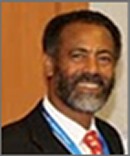

Plenary Lecture
Significant Number of Elderly Patients Live with Potentially Toxic Levels of Digoxin Most Probably Overlooked for Long Enough

Dr. Hundie Tesfaye
Department of Clinical Biochemistry and Pathobiochemistry
Division of Clinical Pharmacology
Faculty Hospital in Motol
2nd Faculty of Medicine
Charles University
Prague, Czech Republic
E-mail: hundie.tesfaye@fnmotol.cz
Abstract: Digoxin continues to be an important drug in long-term heart failure patient management. Digoxin serum levels monitoring is aimed to optimise therapy, whereas the concentration required for optimal efficacy without risking toxicity remains not clearly defined even post Digitalis Investigation Group (DIG) recommendation.
Objectives: This study was aimed to assess how frequently occur the so-called toxic digoxin levels in elderly patients being treated in faculty hospitals.
Methods: Retrospective search for serum digoxin trough levels record as determined throughout the period of two years was conducted in two independent hospital facilities. Only digoxin levels > 2ng/mL in patients older than 65 years were included. Potassium and serum creatinine levels were also evaluated if available with consecutive digoxin levels. Data from 301 hospitalised patients (91 males, 210 females) were valid for the purpose of this study.
Results: Total of 427 trough levels (sampled shortly before the next doses) from patients within age 66-100 years were found to be above the upper therapeutic limits of the older dates or post DIG study recommendations. Serum digoxin levels recorded showed values, Max. 6.19, Mean 3.129 ± 0.70, Mode 2. 8, and Median 3 ng/mL, respectively. Women were found to have high digoxin levels more than twice frequently as men on similar oral doses of 0.125 - 0.250 mg per day in this study. Although elevated in some individuals, plasma potassium and serum creatinine did not show clear relation with serum digoxin concentrations.
In conclusion, this retrospective study demonstrated that significant number of elderly patients live with potentially toxic levels of digoxin most probably for long time, before being discovered. The levels are far from the range recommended post DIG study and warrant special attention to this patient population.
Brief Biography of the Speaker: The author is MD, and PhD graduate of the Charles University, in Prague. Trained as Paediatrician and later as Clinical Pharmacologist, holds Board Certificate from the Institute for Postgraduate Education in Medicine. His present position is consultant in clinical pharmacology at the faculty hospital. The main interest and consultancy area of the author is in particular therapeutic drug monitoring in needy patients including, paediatric and geriatric populations given their pharmacokinetic/pharmacodynamic differences and vulnerability. The author participated in bioequivalence studies and clinical trials including as principal investigator and co-investigator. He is also dedicated to aid dosage adjustment for transplantation patients, oncology patients and others in intensive care including those with renal failure. The author participates in pregraduate and post graduate education both as a faculty member and as invited speaker in the field of clinical pharmacology. With dedication for safe and better use of medicines for human wellbeing, the author is recently recipient of a grant FRVS 2011 to include clinical pharmacology education in the curiculum targeting 5th year medical students.